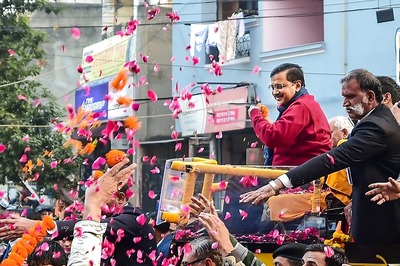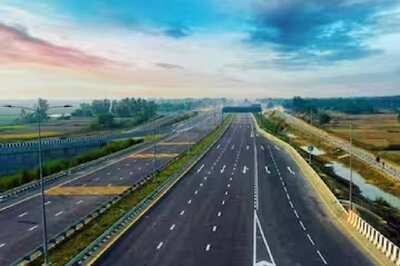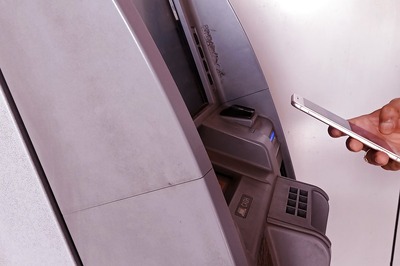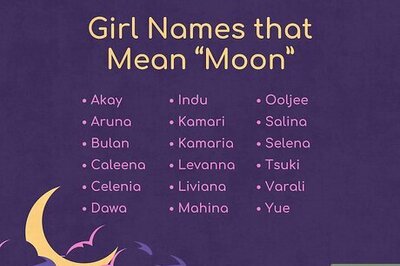
views
Who would have thought that going back to school would be something to look forward to? Well, I certainly didn’t. But then, there aren’t many schools wherein you can learn how to ride a motorcycle faster while also being safer. And that is exactly what the TVS Training School teaches you. The venue was Madras Motor Race Track or MMRT in short. And we reported to school early in the morning.
The students were 19 journalists who have been connected to motorcycles in some form or the other and the school began with a classroom session wherein we were introduced to the TVS team conducting the school. This was then followed by sessions telling us about the rules of the track. And while it sounds simple, as one would think that you simply head on over to the track and simply ‘go fast’, it’s actually a lot more complicated than that.
There are several rules and regulations that one has to adhere to which have been carefully put in place for the safety of both the rider herself/himself as well the other riders that are on the track at the same time. The thing is that once the rider is on the track, the team, marshals and the race officials have limited forms of communication to the riders. A big part of it is the race flags that can tell the rider about a wide variety of things such as approaching danger, slippery tarmac, weather conditions and even if there is a faster rider approaching and you should let them go. So without a doubt, it is important to know which coloured flag means what. TVS also informed us about which is the kind of racing safety gear a rider should be wearing and basic track manners that one has to adhere to – which includes the likes of not crossing the pit exit line and obeying the speed limit while being in the pits.
After this, it was time to head on out to the track. The day was split into several sessions of being on the race track and being inside the classroom. The 19 riders were divided into two batches which would head out to the track in two subdivisions within the batch. Both of these sub-groups, having 4-5 riders in them, would be headed by two of the fastest motorcycle racers in India – TVS riders K Y Ahmad and Jagan Kumar.
I was being led by K Y Ahmad and the first session was meant for us to take it slow. This would help us understand the track better and take a good look everywhere in order to identify the corner-in, apex, and corner-out points which were marked throughout the track. Following them would help us get the perfect racing line – an extremely helpful insight by TVS.
The rule was simple, during the first track session, we were not allowed to use the brakes at all and the only gear that we could use throughout the track was fourth. Once on the track, riders followed their batch leaders and learnt by practice. And simply put, there are hardly any ways better to learn track riding than to follow a professional racer and notice their lines and their body position through straights and corners. The only difference is that since these riders are teaching you, they won’t be pushing themselves, leaving you for dead and finish a cup of coffee by the time you make it back to the pits.
Once the session came to an end, the TVS pit crew asked for feedback from every rider. The motorcycle that I had for the first session had its forks a bit too tight, making me put in a lot more effort through the corners. I informed the crew of the same and they promised me that they will look into it.
Meanwhile, we headed on to our next classroom session. A rider is only as fast as his racing line (which is the correct path to traverse through a corner in order to have maximum speed), but to go through that line as fast as possible, body position is crucial. And that is exactly what the second session was about. We were told about the correct way to sit on the bike when the rider is on the straights and through the corners. The kind of body position one must have when braking at high speeds, entering the corner, mid-corner and while exiting the corner as well. This included having your foot, knees, butt, shoulders, elbows, wrists, neck and your head in the correct position. We were taught about this not only inside the classroom but also on a motorcycle which was parked inside the pits.
After this, we had to apply what we learned as we headed out on the track. And the moment I hit the first corner, the motorcycle felt oh so smooth! This was because the pit crew had done their magic on the motorcycle and tweaked it according to my feedback from the first session. What a blissful feeling!
This time, since we were more familiar with the track and the lines we should take, they allowed us to switch between the third and fourth gear and use a bit of brake too if necessary. While on the track, both Ahmad and Jagan made sure that the riders are maintaining good posture by periodically riding ahead of the rider, as well as behind the rider, and giving them feedback post the session.
Now, it was time for the third classroom session which was about having a good race start. Again, one might think that you just try to ‘go fast’ once the race begins but it is again, a bit more complicated than that. Even at this stage, even before the race begins, there are several things a rider can do to have a quick start on the get-go. This includes having the correct body position in which you push your weight to the front in order to prevent the motorcycle from wheelie-ing and costing a crucial loss of time. Then, you have to find the perfect accelerator to the clutch ratio in order to load the front forks and react quickly as soon as the lights go off, signalling the start of the race. Interestingly, we were told not to roll off the throttle for the first few gears, before we reach the first corner. Yes, this does put a bit of pressure on the gearbox and the clutch but the only thing that one should want at the start of a race is a quick build-up of speed, and doing so results in exactly that.
All of us got to practice our race starts a couple of times along with proper braking technique practice which involved using just the front brakes and coming to a halt in the shortest distance possible while shifting down through the gears and using engine braking as well.
And once all of this was done, it was time for the practice session.
This is when we were let out on the track without any rules. This time, we had to apply everything that we were taught - in one go. And also, post the practice session, we were to undergo a timed session, so it was important for everyone to overcome their fears and build confidence to go faster on the track. And so we did, everyone put in their best in this session and tried to work on their body position, racing line, braking markers, trying to hit every apex and trying to get a good drive while exiting the corner.
After the practice session, it was time for the last session of the day – the qualifiers. But qualifying for what, you ask? Well, the TVS Training School is a Federation of Motor Sports Clubs of India (FMSCI) certified training academy, post the completion of which, the riders are eligible for applying for a race license from the FMSCI. And getting one is necessary as the riders with the top 15 times will be given a chance by TVS to undertake in a year-long championship, called as the Young Media Racer Program. As the name suggests, this is a championship among young journalists who belong to different media publications. This, helps them get an insight into a racers mind – what does a racer feel, what does he expect, the highs of doing well and the lows of messing it up – the journalists get to go through all of it.
So then, when the time came, four motorcycles were fitted were timers and the riders were sent out to the track to do the best that they can. All they had were four laps to record their flying lap.
Once the final session came to an end, it was time to look at the time sheets. The fastest lap time was set by Jehan Darukhanawala, representing ZigWheels, at 2:25:80. I qualified fourth with my fastest lap time of 2:29:38. It was good news, we qualified!
So that’s it, 15 riders have qualified for the championship. Over the course of the next few months, we will be involved in three races – one at Kari Motor Speedway in Coimbatore, one at Madras Motor Racetrack and the final round being held at Buddha International Circuit in Noida. Without a doubt, there is a lot for us to work on and improve over the season.
And while it will be a race, it is surely going to be a great learning curve for all of us participating in the championship. And what better place to start this journey than the TVS Racing School.


















Comments
0 comment